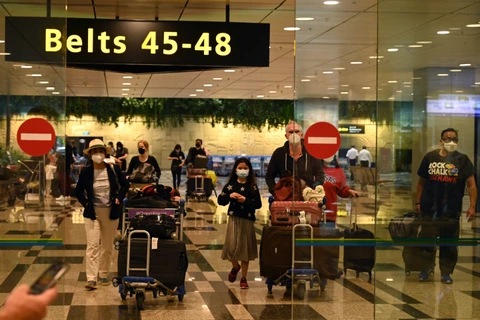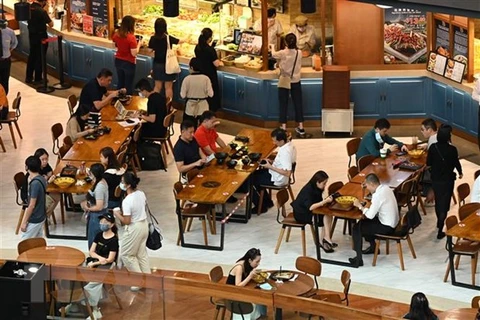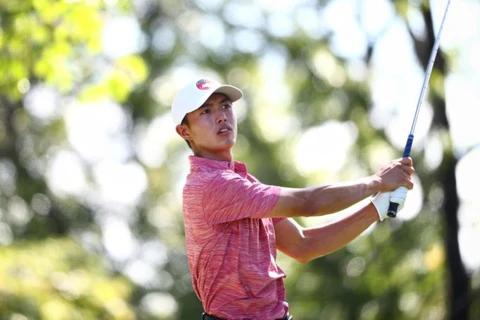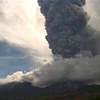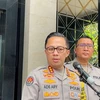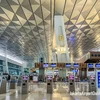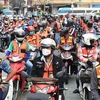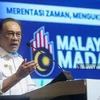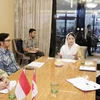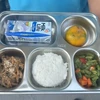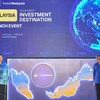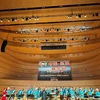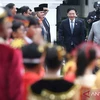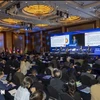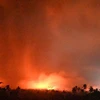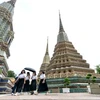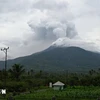Hanoi (VNA) – Singapore’s Changi Airport was crowned the world’s best aerodrome for 15 years straight before COVID-19 due to its superior traveller offerings and hi-tech customer services. Now it is ready to welcome back visitors en masse, hoping improvements made during the pandemic will cement its status as Asia’s premier aviation hub.
Singapore was among the first in Asia to start easing travel restrictions by establishing vaccinated travel lanes that ultimately allowed people from 32 countries to visit without quarantine. From April, the island state was opened to anyone who is fully inoculated regardless of where they are from.
While waiting for this, Changi was making behind-the-scenes adjustments. Self-check-in kiosks and baggage drops now operate when a person hovers their finger over a screen. Passengers use automated immigration gates that scan faces and irises if those biometrics are registered in a passport. Air conditioning and mechanical ventilation has been installed with hospital-grade filters and ultraviolet sanitation systems, and autonomous cleaning robots use misting to disinfect carpets.
And travellers are coming back, gradually. Changi handled 1.42 million passengers in the first two months of this year, a jump from 263,000 the same period last year. That compares with Hong Kong, which handled 157,000 passengers in January and February. The Republic of Korea’s Incheon International Airport, ranked No.1 in Asia for international travel in 2021, processed 675,452 passengers in the first two months of 2022.
However, while 81 of the 91 carriers that used to fly into Changi have restored services, flight frequencies are just 37 percent of pre-pandemic levels. Last year, the aerodrome handled 3.05 million passengers, a drop from 68 million in 2019 before countries closed their borders.
Singapore aims to restore passenger volume at Changi to at least 50 percent of pre-pandemic levels by later this year, up from 15 percent at the end of 2021.
Aviation accounts for more than 5 percent of Singapore’s GDP and provides about 200,000 jobs. The country has allocated nearly 500 million SGD (367 million USD) to boost tourism recovery./.
Singapore was among the first in Asia to start easing travel restrictions by establishing vaccinated travel lanes that ultimately allowed people from 32 countries to visit without quarantine. From April, the island state was opened to anyone who is fully inoculated regardless of where they are from.
While waiting for this, Changi was making behind-the-scenes adjustments. Self-check-in kiosks and baggage drops now operate when a person hovers their finger over a screen. Passengers use automated immigration gates that scan faces and irises if those biometrics are registered in a passport. Air conditioning and mechanical ventilation has been installed with hospital-grade filters and ultraviolet sanitation systems, and autonomous cleaning robots use misting to disinfect carpets.
And travellers are coming back, gradually. Changi handled 1.42 million passengers in the first two months of this year, a jump from 263,000 the same period last year. That compares with Hong Kong, which handled 157,000 passengers in January and February. The Republic of Korea’s Incheon International Airport, ranked No.1 in Asia for international travel in 2021, processed 675,452 passengers in the first two months of 2022.
However, while 81 of the 91 carriers that used to fly into Changi have restored services, flight frequencies are just 37 percent of pre-pandemic levels. Last year, the aerodrome handled 3.05 million passengers, a drop from 68 million in 2019 before countries closed their borders.
Singapore aims to restore passenger volume at Changi to at least 50 percent of pre-pandemic levels by later this year, up from 15 percent at the end of 2021.
Aviation accounts for more than 5 percent of Singapore’s GDP and provides about 200,000 jobs. The country has allocated nearly 500 million SGD (367 million USD) to boost tourism recovery./.
VNA

